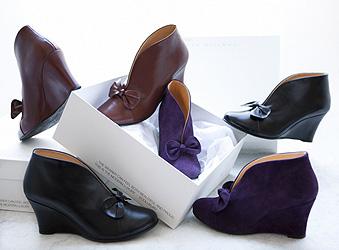 In times when it’s fashionable to discuss climate issues in everything from G8 meetings to local elections, it should come as no surprise that the fashion industry has its own take on sustainability.
In times when it’s fashionable to discuss climate issues in everything from G8 meetings to local elections, it should come as no surprise that the fashion industry has its own take on sustainability.
Majsan Boström has met with researchers to learn more about a rapidly growing genre of environmentally conscious fashion.
Ecoluxury, fashion miles and swishing, are “in” terms in the world of those who want to don fine clothing without stepping on the environment.
Every year Swedes spend more than 10 billion dollars on clothes, shoes and accessories. Aside from putting dents in wallets, shopping sprees also puts a strain on the environment, says Professor Mathilda Tham, from London’s Goldsmiths University, who does research on fashion and sustainability.
“We produce and we consume so much and we do it as such a speed as well, so even though we are increasingly using organic cotton instead of conventionally farmed cotton, those benefits are easily eaten up by speed and scale,” she says.
One big problem, she claims, is energy consumption, the cost to the environment in terms of energy used in production, transportation and usage.
Creating polyester, which comes from raw oil, for example is very energy consuming in its production phase. Another big energy consumer in the lifecycle of a garment is transport, something people in the industry call “Fashion Miles”.
“Very little of our clothing today is produced locally,” Tham says. “A T-shirt appears quite simple to us when we compared with an iPhone for example, but in fact it consists of so many different components and they have very often come from different part of the world to us and that’s why the transport can actually be quite detrimental.”
It can be tricky to puzzle together production and transportation and still be environmentally conscious, says Camilla Norrback, a designer, who is focusing on fashion sustainability in her collections.
“We have the loveliest organic fair-trade alpaca in Peru, but it’s Peru, it’s on the other side of the world,” she says.
Norrback received her first shoe collection Wednesday, which includes shoes where the leather has been tanned with bark instead of using chrome, and the soles made of recycled car tires.
But climate smart clothing is nothing new, says Norrback. In the 1990s, for example, the American outdoors company, Patagonia, made clothing from recycled materials. Norrback’s goal is to offer sustainable fashion that is affordable, and also smart and sleek. A few years ago, she coined the term “Ecoluxury”.
“I don’t want to be this eco-freak, who only wears organic cotton or organic wool, I want to look further,” she says.
So, how expensive is ecoluxury? Those within the industry, say the prices are competitive. A pair of jeans from Dem Collective retail for about 230 dollars. Those jeans, says Karin Stenmar, one of the founders of the sustainable fashion producer out of Gothenburg, are hand dyed with pure indigo and hand-woven by workers earning fair wages. Other high-end jean brands on the Swedish market retail for about 140 to 280 dollars.
We tend to think that the responsibility and energy cost lie in the hands of the producers, but some cases the highest cost lie with the consumers, says Tham. T-shirts, for example, have a high energy cost in its lifecycle.
“Because we wash T-shirts so much, often after every time of use, the impact in the user-phase quite surprisingly is the highest,” she says. “It can amount to up to as much as 85 percent of total energy consumption over the products lifecycle.”
According to a Dutch study Tham used in her research, one piece of every-day clothing has a lifespan of about three years and five months. It’s used 44 times and is washed on average every 3.1 days.
Looking over our laundry habits is one thing to keep in mind, another is to focus on second hand, Tham says.
At the second hand stores of Stockholms Stadsmission, an organization that helps people in need, storekeepers have noticed an upswing in business over the past few years.
“People come in here all the time and say they don’t want to throw things away anymore,” she says. “And that’s a good thing, because what is trash for somebody, can be a treasure for somebody else.”
Tham predicts that the interest in shopping second hand will grow. In London, for example, swapping clothes at so-called “Swishings” are growing in popularity.
“I hate to throw things away and I just assumed that so did my friends,” says Isabella Carlsson, who threw a swap in Stockholm this spring. “All got new clothes, more space in our closets and every now and then when we go out, I see my friends wearing my old favorites and that’s a great feeling.”
Tham is a visiting professor at Beckmans College of Design in Stockholm and lectures at Goldsmiths University of London. In her 15-year-career, she has been working to marry fashion and the environment, hoping that others will follow her lead.
“My passion for fashion wasn’t compatible with my growing awareness of the negative effects on the environment and people that fashion had,” she says. “I had to find a way where I could be helpful from my particular stance and my particular skills. So I thought I should be an activist within the fashion industry.”





